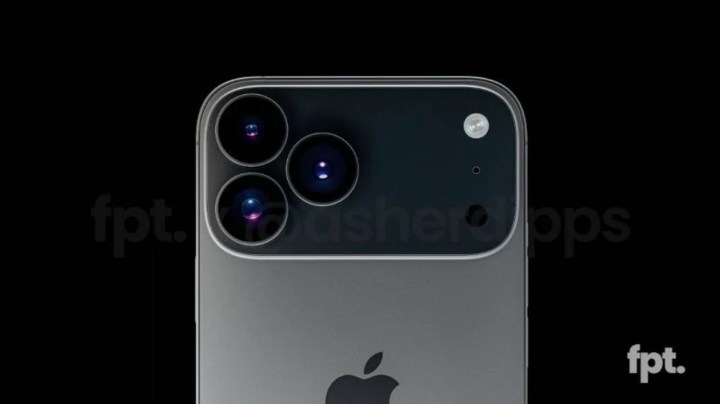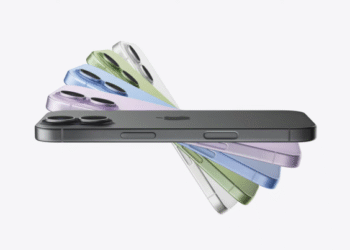Select Language:
The iPhone 17 series is poised to be one of the most highly anticipated launches of 2025, as Apple prepares to compete with the Samsung Galaxy S25 and Google Pixel 10 lines.
This year has already been notable for Apple, thanks to the surprise release of the iPhone 16e and the biggest overhaul to iOS in over ten years with iOS 26. Yet, Apple isn’t finished introducing new devices.
It’s expected that the iPhone 17 lineup will be unveiled in September, potentially featuring a new iPhone Air model for the first time.
Here’s everything currently known about the upcoming series, based on ongoing leaks, rumors, and industry speculation.
Latest Updates on the iPhone 17
- August 13: There are rumors that the iPhone 17 Pro could see a price increase of $50.
- August 12: The new iPhone 17 Air might deliver performance comparable to the 17 Pro, with some trade-offs.
- August 5: The launch date for the iPhone 17 might be set for September 9.
- August 5: Concerns are surfacing about how Apple will ensure solid battery life for the iPhone 17 Air, given its ultra-slim design.
- July 27: The iPhone 17 Pro could see significant upgrades to its camera system, possibly the most substantial in years.
Expected Release Timeline
Recent leaks hint at an Apple event on September 9, with the new iPhone 17 set to go on sale around September 19. Pre-orders are anticipated to open as early as September 12. Historically, Apple tends to launch new iPhones in early September, with pre-orders beginning shortly after the announcement.
| Model | Rumored Launch Date | Rumored Release Date |
|---|---|---|
| iPhone 17 (2025) | September 9 (Tuesday) | September 19 (Friday) |
| iPhone 16 (2024) | September 9 (Monday) | September 20 (Friday) |
| iPhone 15 (2023) | September 12 (Tuesday) | September 22 (Friday) |
| iPhone 14 (2022) | September 7 (Wednesday) | September 16 (Friday) |
| iPhone 13 (2021) | September 14 (Tuesday) | September 24 (Friday) |
Unless unforeseen delays occur—like the COVID-19 pandemic caused for the iPhone 12 in 2020—the new models should likely debut in September 2025.
Pricing Outlook
Economic uncertainties and geopolitical tensions could influence Apple to increase iPhone prices for the first time since the iPhone 12. One popular rumor suggests a $50 price hike for the base iPhone 17 Pro, offset by doubling the storage to 256GB.
If Apple maintains current pricing, the entry-level iPhone 17 might start at $799, with the Pro at $999 and the Pro Max at $1,199. The new, ultra-slim iPhone 17 Air is expected to retail around $900.
Number of Models
Apple typically offers four models each year, and 2025 is no different—although there’s speculation it might replace the Plus with the new Air. This would keep the lineup at four models:
- iPhone 17
- iPhone 17 Pro
- iPhone 17 Pro Max
- iPhone 17 Air
The reasoning is that the larger Plus model has struggled with its positioning, and Apple might opt for the lighter, more versatile Air instead.
Design Changes
Rumors suggest major design revisions for the iPhone 17 series. One possibility is a return to curved edges, a departure from the flat sides introduced in 2020. This stylistic shift might be limited to base models or just the Pro versions.
The most notable visual update could be to the rear camera setup—early renders point to larger bump modules spanning the device’s width, similar to recent trends in smartphone design.
-
iPhone 17: Given that Apple recently redesigned the iPhone 16, the base model probably won’t see a radical overhaul. Some concepts propose a slight size increase to 6.3 inches (from 6.1 inches), matching the current Pro models. Other design elements remain uncertain at this stage.
-
Pro and Pro Max: These premium models may see more significant changes, including the use of titanium instead of aluminum for the frame. Reports from December suggest Apple plans to retain titanium, offering a combination of durability and a premium feel. The back panel could shift from a full glass to a mix of glass and aluminum, with the top portion aluminum to enhance strength and wireless charging capabilities.
In terms of cameras, the iPhone 17 Pro models are expected to initiate major upgrades, moving beyond minor tweaks seen in recent years. Leaks hint at a new rectangular camera bar design, reminiscent of Google’s recent aesthetic, and possibly a notable bump in zoom capabilities—going from 5x to 8x optical zoom.
There’s also speculation that one version of the Pro line may feature a mechanical variable aperture, allowing photographers to manually control the amount of light entering the lens—an innovative step for iPhones, traditionally built with fixed apertures.
Display Improvements
Apple’s likely to boost the durability and scratch resistance of the screens, possibly adding a less reflective, more resilient glass layer. Additionally, industry insiders suggest all iPhone 17 models might feature LTPO OLED displays with 120Hz refresh rates—an upgrade from previous base models with only 60Hz.
The size variations are expected to be:
- iPhone 17: 6.3 inches
- iPhone 17 Air: 6.6 inches
- iPhone 17 Pro and Pro Max: 6.3 and 6.9 inches, respectively
Power and Connectivity
The new lineup should feature faster, more efficient processors. The A19 chip, built on a 3nm process, is expected to power all models, with the base iPhone 17 and Air using a standard version, while the Pro models will likely house a more powerful A19 Pro.
There’s ongoing discussion about the modem technology. Apple has begun developing in-house 5G modems, and some models may feature these chips, reducing reliance on Qualcomm.
Camera Advancements
A significant leap forward is anticipated for camera technology across all models. Each iPhone 17 is expected to sport a 24MP front-facing selfie camera, a dramatic increase from the previous 12MP, promising sharper, more vibrant selfies.
Pro models, especially the Pro Max, are expected to feature a trio of 48MP cameras—a primary, ultrawide, and telephoto—potentially replacing the current 12MP telephoto. There’s talk that the telephoto zoom could be increased from 5x to 8x optical zoom, offering greater versatility.
Design-wise, a potential redesign of the camera bump into a sleek rectangular bar made from aluminum is under consideration. Additionally, the Pro Max might include a smaller Dynamic Island, thanks to a new “meta-lens” for Face ID, enabling a more compact look.
Color options could expand with brighter, richer shades like dark green and teal, alongside the classic colors. Some rumors also point to a color previously seen on the MacBook Air making its way to the iPhone 17 Pro series.
The iPhone 17 Air: The Newcomer
The iPhone 17 Air is the most anticipated addition—offering a thinner, lighter alternative. Rumors suggest it will be around 25% slimmer than the iPhone 16 Pro, with a single-lens camera placed either in the top-left corner or centered on the back.
Achieving this thin profile could involve using Apple’s in-house modem instead of Qualcomm’s, likely reducing the device’s thickness to just 2.49mm. Battery capacity remains uncertain, but space limitations might mean it features only a top-firing speaker, with the majority of the frame composed of aluminum and titanium, favoring weight savings and durability.
Display and Durability Enhancements
Apple is believed to be working on making the screens on the iPhone 17 Pro models tougher and more scratch-resistant, with reduced glare thanks to an anti-reflective coating.
Furthermore, all models might benefit from a shift to LTPO technology, enabling dynamic refresh rates and improved battery efficiency. The base model could see its screen size bumped to 6.3 inches, with the Air reaching 6.6 inches, maintaining the typical sizes for the Pro variants.
Final Thoughts
Expect the iPhone 17 series to deliver a mix of design refreshes, technological upgrades, and new features that aim to elevate the user experience. Whether it’s improvements in camera capabilities, display technology, or processing power, Apple appears ready to make 2025 a commemorative year for its flagship device line.






